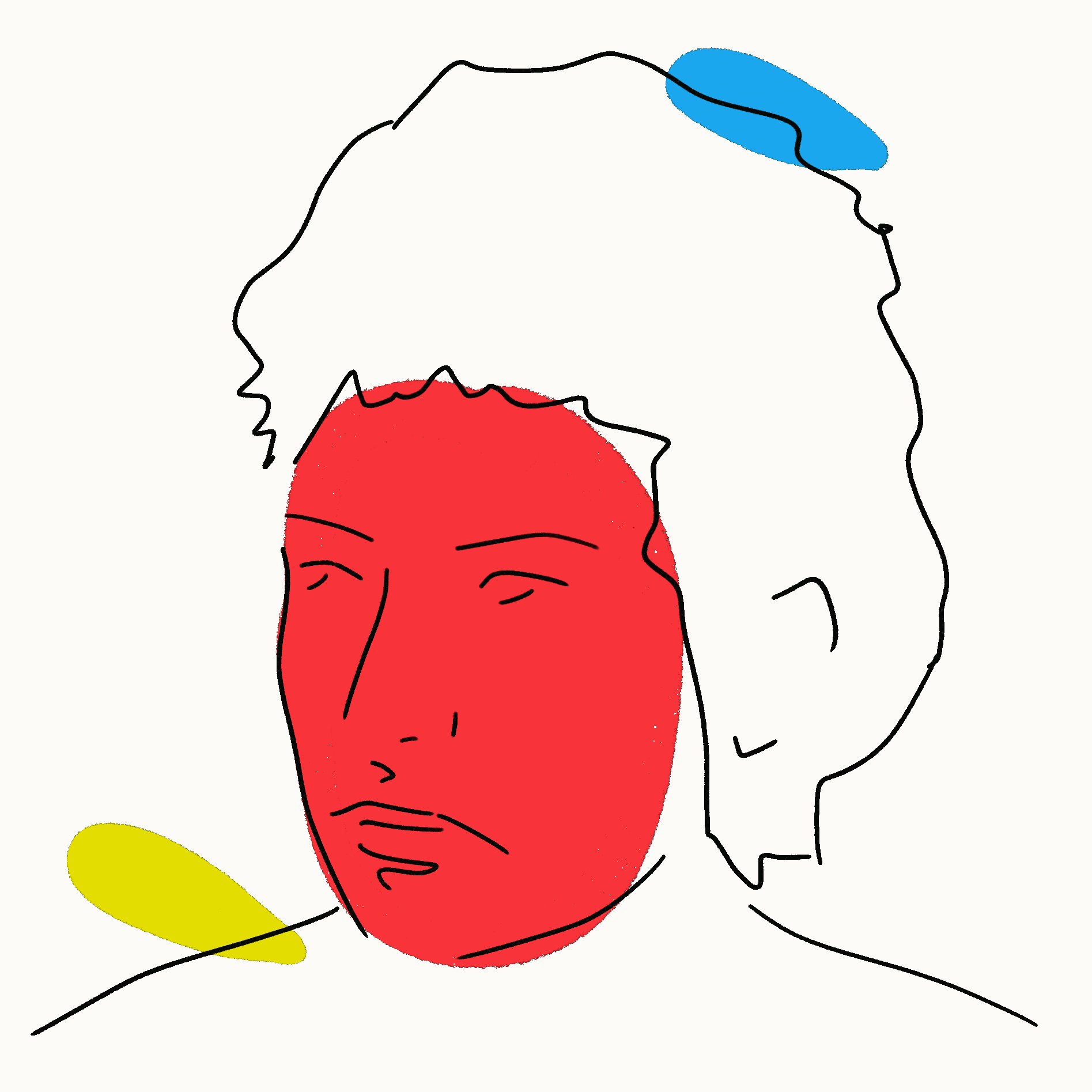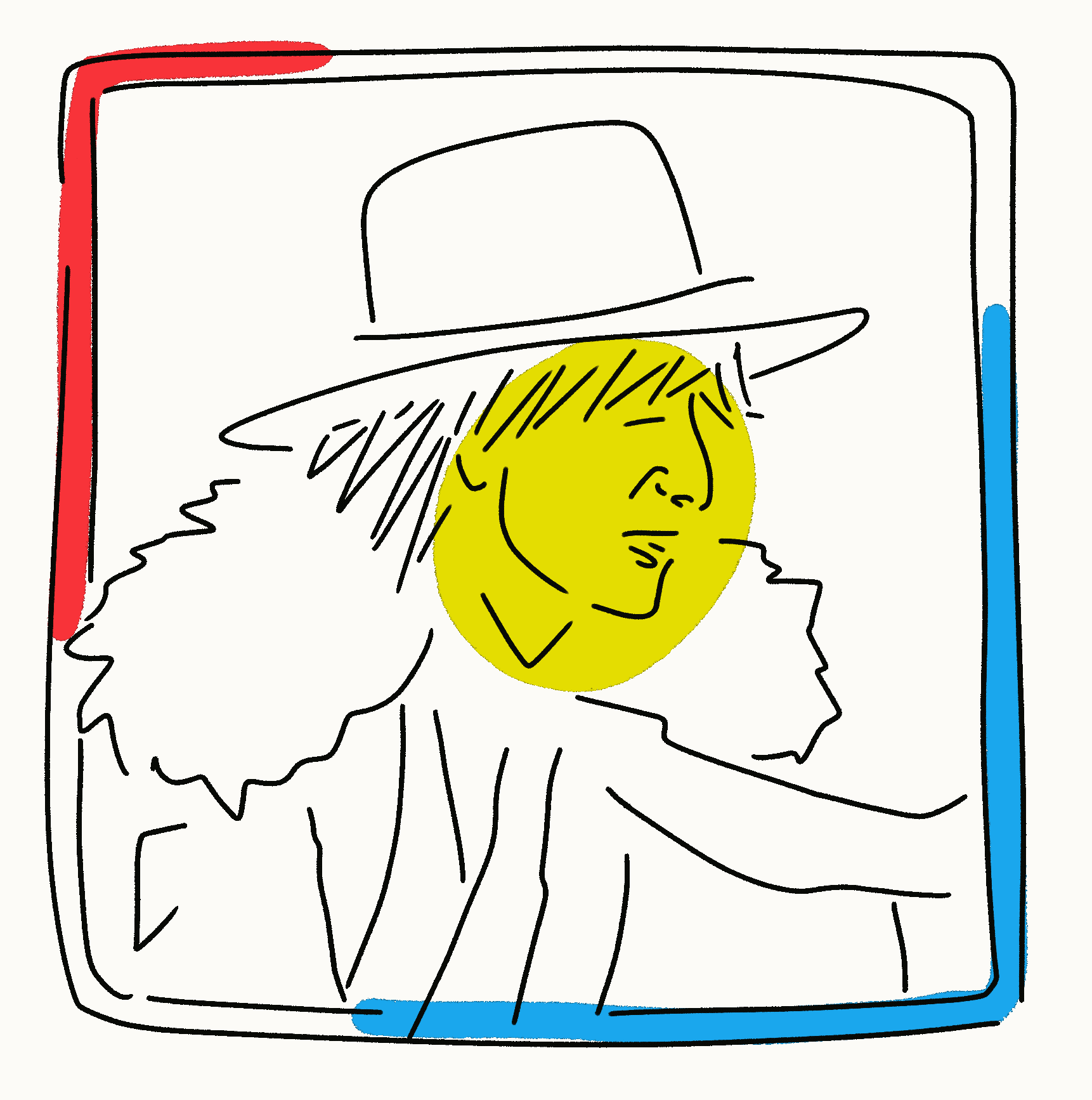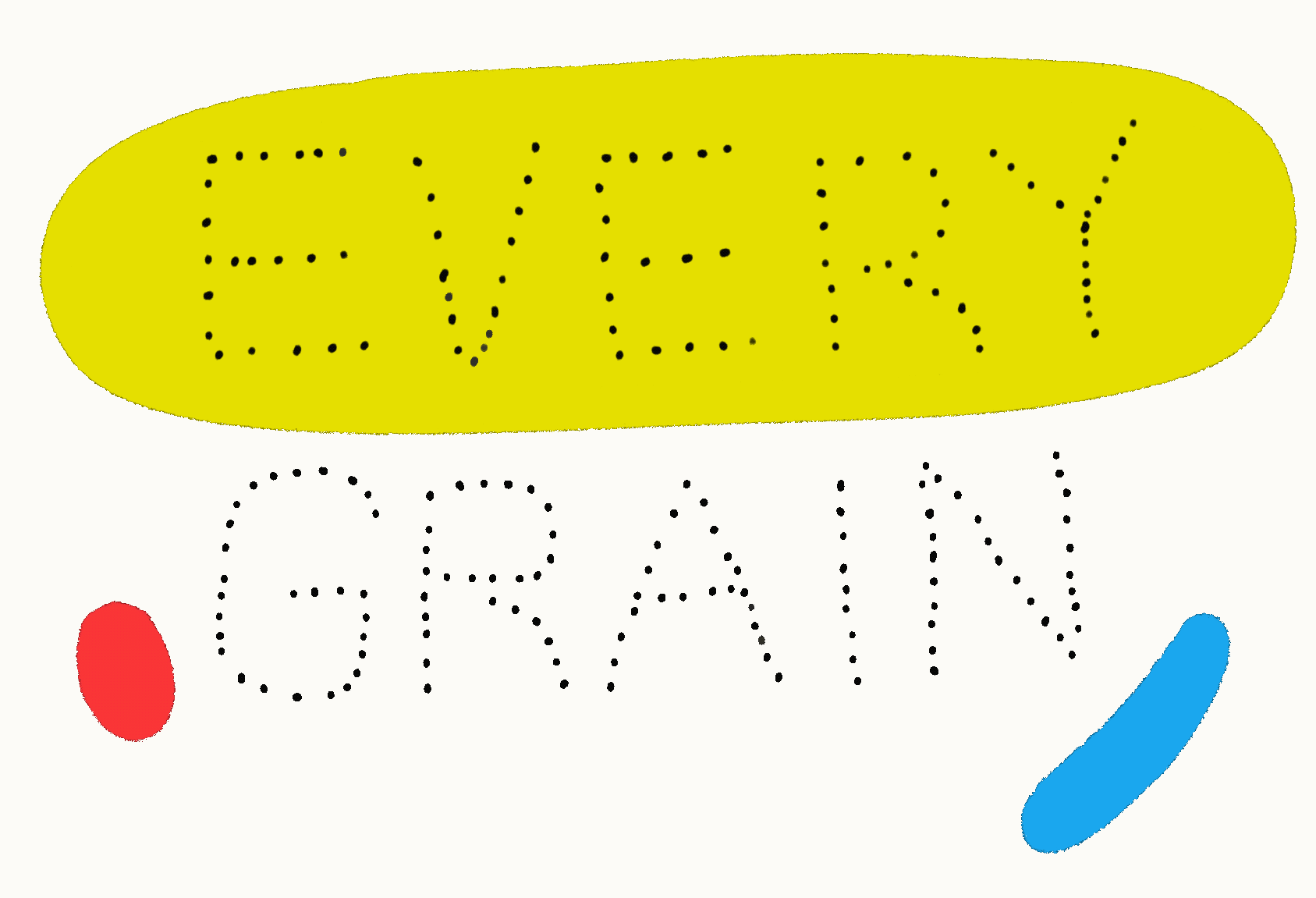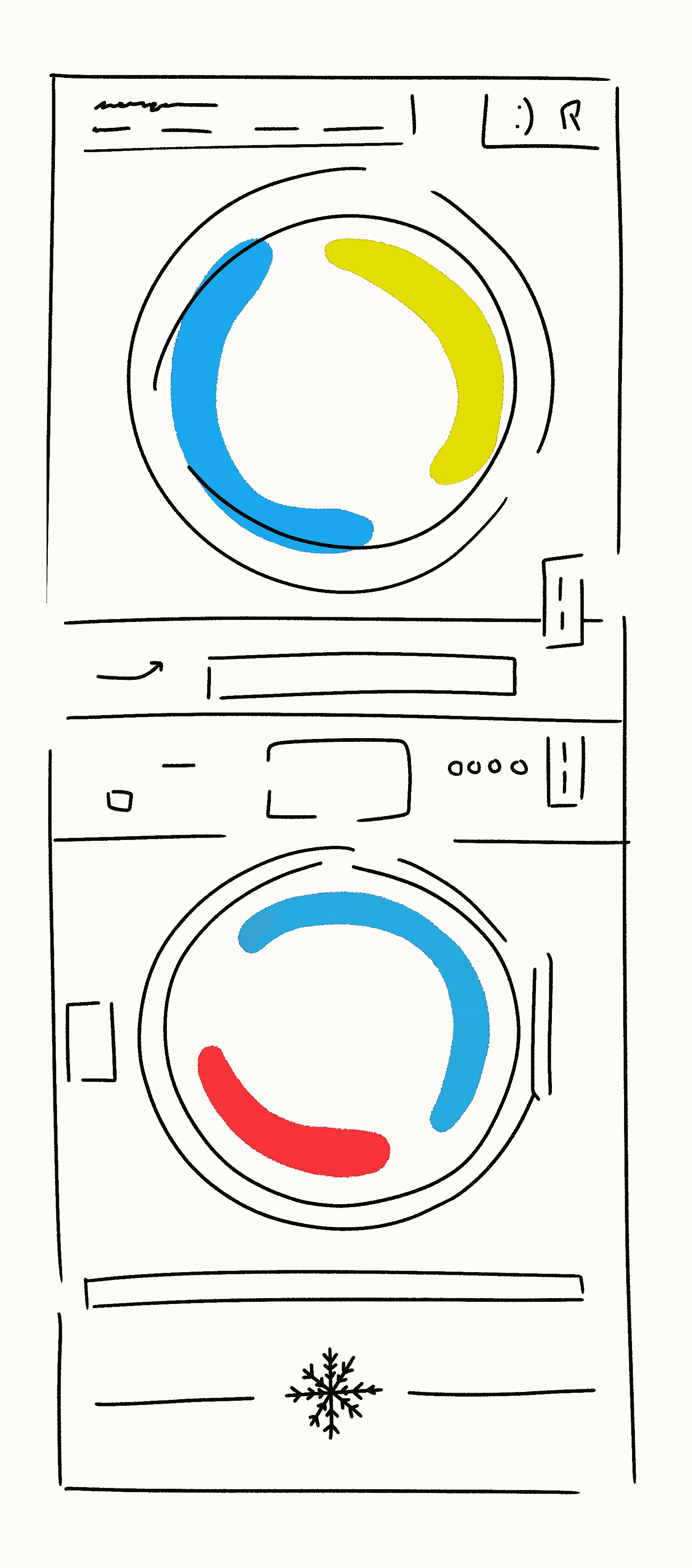I was 16 and had just been hired for my first job, bagging groceries for a Lansing-area supermarket called Schmidt’s. They brought me on at minimum wage—$3.35 an hour in 1986—and I came in early on a weekend morning to train with two other new hires, high school kids like me but from schools a town or two over. When we got there, we went to the break room in the back, a series of picnic tables covered with overstuffed ashtrays and a few days’ worth of newspapers, and the store manager, John, had some welcome packets stacked in a corner. These contained tax paperwork and information about customer courtesy and how to clock in and out, that sort of thing, and he handed them to each of us.
These people didn’t know me 👀 These people didn’t know me 👀
As we opened them, just before he started talking, I made a joke, something to break the ice, though I can’t remember what I said. My normal mode in this kind of situation would be to stay quiet, avoid trouble. But this time I said the joke, and it elicited a few laughs, which always feels good. And then I noticed after I’d spoken that I was experiencing something new: These people didn’t know me. For the first time I could remember, I was in a situation where I had no shared history, no family connections, no classmates, nothing and no one in my immediate vicinity that connected me to my past. If I wanted to be someone who said something funny, even though it might not be appropriate, I could do that. These people wouldn’t know the difference. To them, I would be the kind of person who did such things, and who knows, over time they might come to expect it.
In that moment, I realized just how much of my behavior I structured to match external expectations of who I was.
And I felt this great swell of possibility, that in life you had a choice to be who you wanted to be, that you weren’t bound to how others thought of you. Suddenly the world seemed much bigger. Soon, I’d be in more situations where I was known to no one and I could, if I wanted, start over.
Within a year or two, I became obsessed with Bob Dylan, and every time I’d listen to him, I would remember this moment and that new feeling. He took the notion that I felt for the first time in that smoky break room and built an entire universe out of it. It’s a space I would return to for the rest of my life.


In November 1985, Columbia Records released Biograph, a five-LP, three-CD box set featuring 53 tracks by Dylan—35 taken from his albums and singles, 18 never previously released. The set functions as an anthology of Dylan’s career at the quarter-century mark, but the selections don’t neatly overlap with those years. The most recent material on it is from 1981—it has nothing from Infidels (1983) or Empire Burlesque (which hit shelves in June 1985, five months earlier). The earliest recording came from the sessions for Dylan’s self-titled debut, recorded late in 1961 and released in ‘62. Effectively, Biograph represents 20 years of his career. He was only 20 at those first sessions, and he had just turned 40 when he recorded 1981’s Shot of Love. But he seemed old, at least to someone like me who was newly discovering his music.
I bought Biograph about a year after its release, so late 1986, which would mean it was a few months after I got that job bagging groceries. CDs were my chosen format at the time, and I had to strategize for each purchase—they ran about $15 per disc, about five hours of work after taxes. I could either make my way through his discography one expensive CD at a time, or drop a chunk of money for access to the entire sweep of it. I went with the latter.
The box isn’t currently in print and isn’t present on streaming services, though people have created playlists that feature all its tracks. But even though I’ve heard almost all of Dylan’s albums now and own most of them (I have 30-something of them on LP), Biograph remains special to me. Some of that is because of when and how it hit me, how it overwhelmed me with music from across his career when I thought I’d only be interested in a small slice of it.
Biograph functions as an album, with sequencing that draws connections across time.
In the Rolling Stone review of the set that ran in January 1986, writer Tim Holmes approaches it as a vinyl work. Holmes describes the flow and themes of its 10 sides, and they work beautifully in that context, taken in chunks of 20-something minutes. Side one of Biograph features love songs, starting with one of Dylan’s biggest hits (“Lay Lady Lay”), zooming back to his first recording sessions, and then landing back in 1970, with “If Not for You”; side two is protest songs (“The Times They Are a Changin’,” “Masters of War”); side three introduces early electric Dylan; and so on. The themes with most of the other sides are much more subtle, but the more you listen, the clearer they become, and it makes Dylan’s career feel like one enormous project instead of a series of discrete phases.
The project covers an astonishing time: It starts before “the 60s” as we know it began, and ends before “the 80s” as an idea had taken shape, and encompasses all the changes in Dylan’s life during that stretch. And there’s something poetic about it ending with his oft-reviled “religious phase,” the three collections of songs (1979’s Slow Train Coming, 1980’s Saved, and Shot of Love) that followed his turn toward Evangelical Christianity. To make an argument for his continuing relevance in 1985 and conclude with material from these albums was a risky move back then, but Dylan fans now hear that era differently.

For most of my life,
I’ve listened to Dylan alone.
Most of the people closest to me are ambivalent about Dylan. His songs and records have been canonized almost from the very beginning, and engagement with his work is foundation if you care about music history, but the pleasure of his music can be elusive.
In 2005, David Stubbs, a writer I admire very much, wrote a piece about his history with Dylan on his Mr. Agreeable blog called “Bob Dylan Contemplated From a Position of Semi-Ignorance.” I’ve pointed people to this post for years primarily because it articulates the “I respect it more than I enjoy it” perspective on Dylan’s work. “I swore that one day, I would crack encrypted, Rubix cube lyrics such as ‘Jewels and binoculars hang from the head of the mule’,” he writes. “And when he embarked on those shambling harmonica solos, I piously expunged images of old geezers outside Tottenham Court Road tube station with 18p in their caps.”
I know many people who think like that, and so most of my considerable Dylan listening time has been just me and Bob. Yet that actually enhances and deepens my connection to his music. Dylan’s songs, on a fundamental level, are about moving through the world on your own. Biograph opens with a side of love songs, but Dylan’s love songs strike me as ephemeral—he’s describing a fleeting period of joy that exists between long stretches of loneliness.

Dylan’s loneliness is productive.
Solitude creates a space for observation. He sees things he might not if he were part of a crowd or a scene. His characters have been cast out; he writes angry songs directed at people you’re not sure deserve it (“It’s All Over Now Baby Blue,” heard on Biograph in a stunning live version from 1966, and “It Ain’t Me Babe”); you get a sense he’s pushing people away, not because of what they’ve done so much as that he wants to be by himself.
Dylan’s aloneness is seductive to a young person unsure of where they belong. If you spend enough time communing with his music you begin to think about how the world surrounding you might hold much more than you imagined. You look at things differently, to see the stream of characters through your life in new terms.
So when I listen to songs like “Up to Me,” a brilliant outtake from Blood on the Tracks, I think of moving through time and feeling my way through jobs and relationships and my own changes and seeing if I might shape all that into something that might resemble art. In this song, Dylan feels that burden. He wanders, he meets people, they get in trouble and they need something from him and he knows he has to do something with it.
Dylan feels that burden ⑇ Dylan feels that burden ⑇
Well, I met somebody face to face and I had to remove my hat — She’s everything I need and love but I can’t be swayed by that — It frightens me, the awful truth of how sweet life can be — But she ain’t a-gonna make me move, I guess it must be up to me
The awful truth of how sweet life can be. If Dylan winds up with this person, he’ll no longer be doing what he does best, going from town to town and changing the world simply by articulating the truth that lies beneath the surface.
“Up to Me” is a perfect example of how my connection to Dylan is hard to square with most of what is written about him. Ever since the ’60s there’s been a cottage industry of writers and critics who try to “decode” his work to “see what it means,” and for those people every song reflects something happening in Dylan’s life. He might address one song to critics, while another is about his failing marriage, and so on. I’m not saying there’s no truth to this kind of analysis, but my instinct has always been to map these songs onto my life and, perhaps, draw from his techniques and make my own version of it. His songs are giving you tools to build something of your own.

In a 1978 interview with Rolling Stone, Dylan described how his writing process rather suddenly changed, and it happened around the time of his fabled motorcycle accident in 1966 near Woodstock, New York.
“Right through the time of Blonde on Blonde I was doing it unconsciously,” he said. “Then one day I was half-stepping, and the lights went out. And since that point, I more or less had amnesia. Now, you can take that statement as literally or metaphysically as you need to, but that’s what happened to me. It took me a long time to get to do consciously what I used to be able to do unconsciously.”
David Berman, songwriter, poet, and front man of Silver Jews, used a phrase in a poem called “The New Idea” that seems to describe perfectly what happened to Dylan in 1966—“beauty blew a fuse.” The current flowing through Dylan’s brain in the mid-1960s, when he was functioning at a level few artists ever reach, finally tripped a breaker, fried some circuits, and rewiring was in order. Some of that surge could have been traced to Dylan’s amphetamine use during the period, but that’s just speculation. There was a force powering his work that he didn’t quite understand and which he had trouble returning to once it was gone.
It’s this force that animates the live version of “Visions of Johanna” on Biograph, a performance that completely shattered me when I first got the set. In the set’s liner notes, which find Cameron Crowe interviewing Dylan about every track, the latter describes writing “Tombstone Blues,” which landed on Highway 61 Revisited: “I felt like I’d broken through with this song, that nothing like it had been done before...just a flash really.”
There’s a line in “Tombstone Blues” that was revelatory when I first heard it: “The sun’s not yellow, it’s chicken.”
The moment reminds me of the first time I read Gertrude Stein’s Tender Buttons—I realized for the first time the structure of language shapes consciousness and it can be twisted into hallucinatory shapes. Language had more power than I had imagined. Dylan was, of course, making a play on “yellow” as a synonym for “cowardly,” and then jumping from there to “chicken.” But the way it meets the ear the first time you hear it, it’s hard for your brain to apprehend what’s just happened. I still get that tingle of discovery when I play it.
But where I encountered Stein’s words only on the page, Dylan’s were carried by his voice. “Tombstone Blues” describes trouble and calamity, but his tone floats him above it all, his apparent amusement sometimes curling into an angry sneer. Dylan’s voice has done many things: He can be tender or wistful, pissed off or mournful; sometimes he sang sweetly and sometimes he let you know he was in on every joke. Over time, his voice has grown ragged, reduced to a pinched whine with scarcely more body than a whistle, but he still has his sense of phrasing. Because his voice sounds unlike anyone else’s, it can’t help but sound lonely. You hear it and there is no other, so you remember both the power and limitations and ultimate anguish of being part of the world but also separate from it.

I was 19 or 20 and working in the meat department of another grocery store. I remember a lot of binge drinking and a lot of terrible hangovers—it’s alarming to me now what I would willingly put my body through every Friday and Saturday night. I’d be up until 3 a.m. and then punching in to work later that morning at 7:30. It wasn’t uncommon for me to throw up into the bone barrels, which were containers we kept in the cooler filled with fat and bone. These receptacles were sold to rendering companies, which I believed turned them into soap. And since any organic material was fine, they often included my vomit.
A new clerk named Charlotte started in the meat department. She had long dark hair that she put into a thick braid for work. When I think of her now, I imagine that rope of hair threaded through the opening in the back of our adjustable mesh caps, and I remember her smiling. She seemed, at least initially, to have some kind of inner peace that was inaccessible to me, but it was hard to know if that was just my perception.
Charlotte was the first born-again Christian I knew, and since her faith was relatively new for her, she loved talking about it. Working late at the grocery store there was a lot of time for conversation and we spent much of it talking about the existence of God—she was obviously convinced that he did, I was equally adamant that he did not—and humanity’s place in the world. That extended to morality, ethics, the purpose of life, what happens after death, and so on. It was a fun way to pass the time as we hosed down the floors and cleaned the bone saw and meat grinder.
Even though I had a skeptical idea of Christianity in general, Charlotte was so open and cheerful about her beliefs and experiences I couldn’t help but be interested.
I wanted to better understand how she saw things. She suggested I read C.S. Lewis’s Mere Christianity, which I did. She brought me to a concert by a popular Christian singer-songwriter whose name escapes me—I think he was bald, maybe in his early 40s, and he played piano—and as I sat in the theater with her and her friends while they clapped and sang along I thought, “This might be the worst music I’ve ever heard.” I remember this guy saying that he sang about Jesus because “there’s nothing else worth singing about,” and I found that idea abhorrent, though I also acknowledged there might be some context I was missing. After the show I told her I thought his music was truly awful, and I then decided I would make her a mixtape.

I can’t remember what was on that tape except for the first song, Dylan’s “Every Grain of Sand,” which I taped from my copy of Biograph. It was first released on Shot of Love, which I wouldn’t own for many years, and this song was one where the appeal was obvious to both me and Charlotte. She pointed out some finer points of the lyrics, how certain lines in the Bible were referenced, and she found it just as moving as I did. I knew from what she told me about her conversion that the time just before it was bleak. She had been through a lot of things, including substance abuse, and the song captured the transformation that happened after God had entered her life.
I didn’t have a strong enough understanding of Dylan’s life and his turn to religion in the late 1970s and early ’80s to understand what “Every Grain of Sand” meant to him, but I could relate to the idea of hitting bottom and trying to find a way out. For Charlotte, and Dylan, at the time, they’d found an answer, but I was still looking. Listening to “Gotta Serve Somebody” and “I Believe in You” on Biograph, I heard something new in Dylan. When he sang about God, he penetrated the armor of the essential aloneness. It scared me, a little, because I knew on some base level that this path to peace was not for me, and I wasn’t sure there would be another one.

If I want to play music off my phone through my 2013 Subaru Outback’s stereo system, I need to plug my iPhone into a USB jack. But the USB port was built for listening to iPods, not phones, so it doesn’t work perfectly. When I start the car with my phone plugged in, it starts playing Bob Dylan’s “Abandoned Love,” an outtake recorded for his 1975 album Desire, because the song happens to appear first alphabetically in my iPhone’s mp3 library. Every time I start my car I expect to hear a skipping acoustic guitar that bounces like an excited heart and Dylan and Ronee Blakley singing “My heart is a-tellin’ me I love ya still.” It’s a “let’s go for a drive” sound, now as familiar as a fasten-seat-belt alert.
It’s a great song, and it would have fit perfectly on Desire, a record that took me a long time to love (but which I now do). I will never file a Dylan album away forever; it’s not unusual for one that didn’t stick when I first heard it to make sense to me 20 years later.
A few weeks back I was sitting in my car in the parking lot behind a laundromat in Woodstock.
Down the street is an upstairs space where Dylan wrote songs in the mid-1960s. Of course, I love thinking about that. I live near here now. And on this day it was freezing, but with COVID you’re not allowed to wait in the laundromat. I could have turned on my car and cranked up the heat but it feels wrong to let it idle for 30 minutes at a time, so I put on my hat and shivered in the front seat while I waited to go back inside and put our clothes in the dryer.
“Abandoned Love” had come on when I started my drive to Woodstock, same way it does every time I plug my phone into the USB, but now I was listening to Street-Legal, an album I’d owned for years but never liked. For the first time, as I sat in the car and watched my frosty breath, it made sense to me. By the time I got to “Where Are You Tonight? (Journey Through Dark Heat),” from its opening artificial-sounding hand percussion to the warmth of the organ riffs and the howl of the background, I was close to loving the record. I heard endurance, and acceptance, and a sense that you have to keep going even though you don’t have the answers. I realized that this song would give me a portal into the rest of Street-Legal. Thirty-five years on, no longer alone in the world but still realizing the power of aloneness there in that parking lot, there were still sides to this guy’s work I was understanding for the first time.





